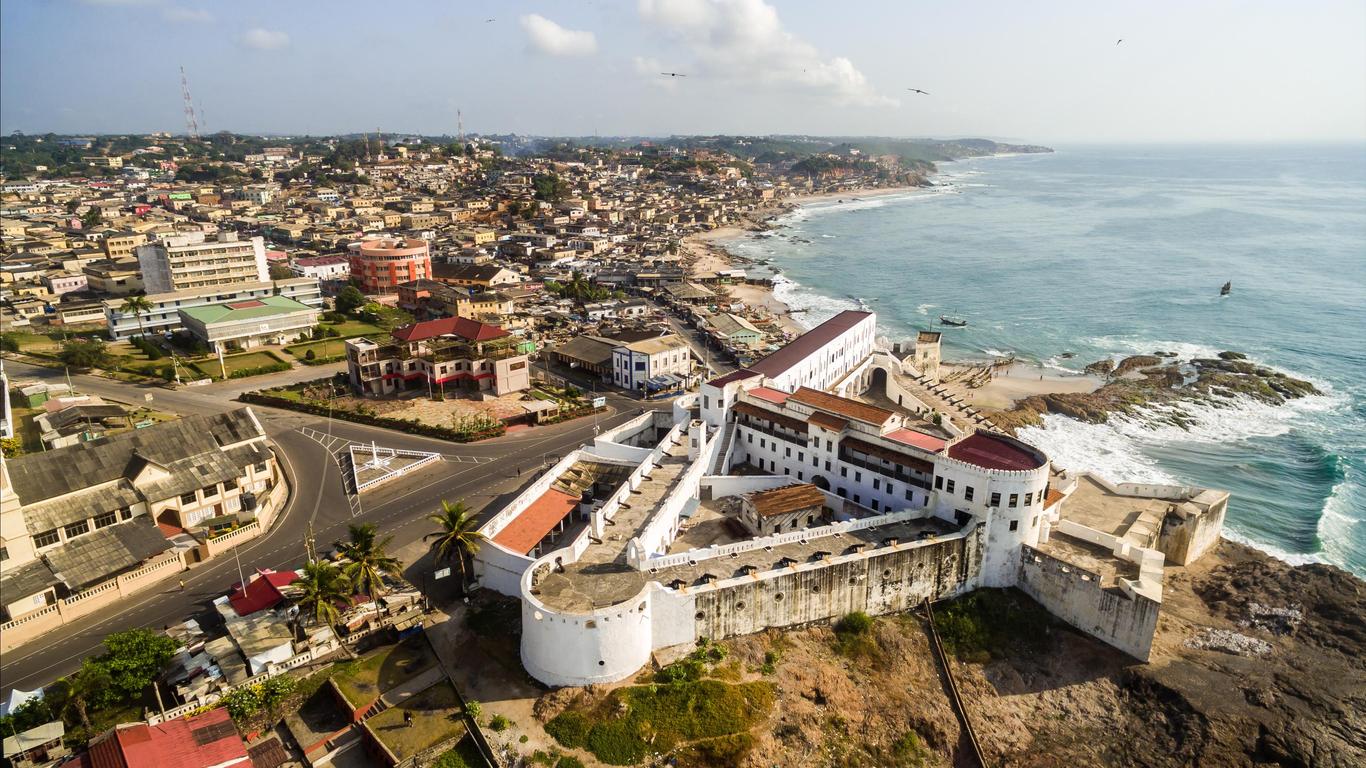Originally known as “Oguaa” (“River of Crabs”), Cape Coast is one of the oldest settlements in Ghana. Its fascinating history includes periods under Portuguese, Swedish, Dutch and British rule, with the acquisition of gold, slaves and honey driving their interests in the area. Overlooking the Gulf of Guinea are trade forts and castles dating back to the 16th century.
Things to do in Cape Coast
Dominating the waterfront is the UNESCO World Heritage-listed Cape Coast Castle, which was originally established as a Portuguese trading post in 1555. It was later used by the Swedish Africa Company to trade in timber and gold before becoming the holding place for enslaved Africans destined for the Americas. Join a guided tour to learn about the poignant history of the site and see the “gate of no return”.
Housed within Cape Coast Castle is the West African Historical Museum, which exhibits a fascinating collection of cultural objects that include slave trade shackles and ceremonial drums. You can get up close to ancient Ghanaian pottery and muskets from the colonial years while learning about the castle’s role in the arrival of Christianity to the area.
A short drive inland from Cape Coast is Kakum National Park, which was originally established by the local people as a reserve in 1931. It provides a habitat for giant bongo antelopes, African elephants and Diana monkeys and is designated as an Important Bird Area. A highlight of Kakum National Park is its canopy walk, which stretches for 350 metres through the treetops.
Getting around Cape Coast
Cape Coast is around three hours’ drive from Accra and Kotoka International Airport, which has flights to destinations across the globe. Long-distance buses connect from the Ghanaian capital and tro-tro mini buses travel throughout Cape Coast, connecting most of its attractions.





